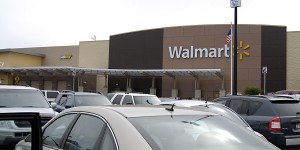While the days of cash flow underwriting are a distant memory for veteran insurance executives, the need for industry’s more recent “preoccupation” with underwriting profit is starting to subside, two specialty carrier leaders suggested yesterday.
Speaking at the Keefe Bruyette & Woods Insurance Conference in New York Wednesday, W.R. Berkley Corporation’s Chief Executive Officer W. Robert Berkley Jr. and Executive Chair William R. Berkley described the earnings power of a sound investment portfolio and the fact that this power is getting stronger as interest rates rise.
Responding to a question about the trajectory of interest rates and the impact of investment income on operating returns, the CEO offered what he termed “quick sound bites” about the industry’s reaction to the “extraordinarily extended period” of historically low interest rates, which forced “those that observe the industry and those that are in the industry [to] have become appropriately preoccupied with underwriting results—because that’s where you made your money.”
“While I do not believe we are going to go back to a place where the mindset is cash flow underwriting, I think that many [people] underestimate the earnings power of a business like the one that we work for when it comes to where interest rates can take investment income, where it is likely to go naturally and how quickly we can get there,” he said. (Editor’s Note: Cash flow underwriting was a strategy used during some of the industry’s softest markets, when interest rates were high and carriers garnered market share with inadequate premium rates, gambling that losses would be slow to pay out and investment returns would cover up pricing mistakes.)
Expanding on their shared viewpoint, his father, the executive chairman, said, “We, for an extended period of time, felt you had to get returns on underwriting. You had to shorten the duration. Interest rates were too low to sustain profitability based on investment income.”
Specifically discussing Berkley’s recent past investment strategy, he said that such thinking also prompted the investment team to expand the types of investments it owned to include private equity, real estate and natural gas pipelines, “where we could get returns—a little more lumpy on some occasions, but better returns than 2.5 percent available for fixed income securities.”
The strategy is changing again.
“We started to look out, and as we started to have an inverted yield curve and opportunities arose to invest in the three-year period with a 3.5-4 percent return, we started to move a little more in that direction. And it’s just the beginning. This quarter is probably the beginning,” said the elder Berkley.
Estimating that the Berkley portfolio now has a 2.3-year duration—still short of the four-year duration of the carrier’s liabilities but moving closer—he predicted that interest rates are going to continue increasing. “Much higher than 5 percent? I don’t know. But certainly higher,” he said.
Both men emphasized the amount of investment leverage that exists in the carrier’s economic model and the substantial boost in investment income and operating returns that will come with rising interest rates. “I think that the earnings power coming from the investment portfolio has not been considered as it should be going forward,” the CEO said.
The executive chairman supplied some math to demonstrate that “earnings power,” inviting analysts in attendance to think about $20 billion dollars of invested assets, combined with a 150-200 basis point increase in yield.
“Those are pretty big numbers,” he said. (Editor’s Note: 100 basis points is equivalent to 1 percent)
In the Market for Prop-Cat
During their presentation, the two executives also spoke about insurance and reinsurance market conditions, offering familiar commentary about how market cycles no longer “move in lockstep” for different lines of business and about how fear and greed determine the inflection points of market cycles—common themes of Berkley earnings conference calls. Asked specifically about the property-catastrophe reinsurance market, which has some industry players running for the exits, CEO Berkley said his company is in the market as long as there is an opportunity to achieve risk-adjusted returns.
“We approach the business with a view that we’ve defined as risk-adjusted return. We think about that on the underwriting side. We think about it at the investment side. We think about it in everything we do. That’s the cornerstone for how we operate the business,” he said, explaining that “all returns are not created equally. So, you need to consider the type of risk that you’re taking on.”
“When we look at property-cat, we think the industry has a long history of not appropriately considering the risk that it is taking on. In particular, we don’t think that it appropriately grapples with the component of volatility as a piece of the risk that needs to be contemplated,” he said.
Still, “we have no problem with the product line. We are very happy to write it [in] a disciplined way.”
“We are not opportunistic,” he said. We are in the market for property-cat where we will write the business, we will accept the exposure at a rate that we believe is appropriate…We want to get paid for that volatility,” he said.
Summing up his thoughts on the matter, CEO Berkley said, “We are in the early stages of a property-cat market where there is a better than average chance that you will see us expand our presence—because we think we’ll get paid for it.”
In the meantime, Berkley executives are sitting back and watching, he concluded.





















 Allstate: How Can You Save on Auto Insurance?
Allstate: How Can You Save on Auto Insurance?  Performance Review: Why Insurers Struggle to Underwrite, Price and Reserve for Commercial Auto Risks
Performance Review: Why Insurers Struggle to Underwrite, Price and Reserve for Commercial Auto Risks  Is State Farm General a Sinking Ship? California Emergency Rate Request Dropped to 17%
Is State Farm General a Sinking Ship? California Emergency Rate Request Dropped to 17%  Rising Civil Unrest, Political Violence Remain Top 10 Risk for Global Businesses: Allianz
Rising Civil Unrest, Political Violence Remain Top 10 Risk for Global Businesses: Allianz 








